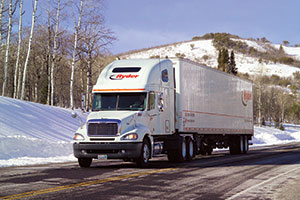New Lease Accounting Procedures Require Fleet Review, Experts Say

This story appears in the March 14 print edition of Transport Topics.
Long-awaited nationwide lease accounting standards will require fleets to take a close look at their accounting procedures to assess how the changes affect their financial decisions, industry experts said.
The new regulation requires that leases longer than 12 months be placed on the balance sheet of lessees, such as trucking fleets, as a liability. The lease value also will have to be shown as a balance sheet asset.
The changes are arising from the final lease accounting rules established by the Financial Accounting Standards Board, whose rulings dictate U.S. accounting practices. FASB, as it’s known, has been studying changes since 2006, in the aftermath of scandals such as Enron Corp.’s gaming of accounting rules by keeping large portions of its liabilities off the balance sheet.
Following generally accepted accounting principles, or GAAP, fleets will record lease expenses based on whether the lease is a capital lease, also known as a finance lease, or an operating lease. One major change brings operating leases onto balance sheets, to provide more transparency for investors. Previously, operating leases only had to be shown as footnotes to financial statements.
“The new standards look at leases from a trucker’s perspective,” said Jake Jacoby, CEO of the Truck Renting and Leasing Association, adding that the new rules shouldn’t provoke fear of change for fleets because the underlying reasons for leasing remain intact.
Leases offer lower upfront costs, better cash flow, outsourcing benefits, capital preservation and avoidance of equipment obsolescence, Jacoby and others said.
FASB gave companies a lengthy lead time to adjust to the new standards, setting public companies’ effective date for fiscal years that begin after Dec. 15, 2018. Private companies have at least one year longer to make the changes.
Bill Bosco, a consultant to the Equipment Leasing and Finance Association, said carriers should begin planning for the adjustment now. In addition to changing their accounting methods, he said, it was important for fleets to do a calculation that evaluates the effect on debt covenants of their existing leases that are coming into the balance sheet.
The reason, he explained, is that when the new standard takes effect, companies will be required to show retroactive financial statements, including 2017 for public companies and 2018 for private ones.
Industry executives believe the new rule’s structure won’t dissuade fleets from choosing to lease instead of buy assets.
“We do not anticipate any material impact on our customer base or sales trajectory from recently announced changes,” ArtGarcia, chief financial officer of Ryder System Inc., told Transport Topics earlier this month. “Ryder customers are generally not outsourcing for the purpose of balance-sheet treatment. Their outsourcing decisions are driven by the economics of our offering and the desire for cash flow and profit and loss savings. In addition, over 90% of Ryder’s full-service lease customers are privately held, so balance-sheet presentation is less important. Credit rating agencies also already consider lease obligations in their analysis.”
However, Garcia also said, “The standard creates more accounting and reporting around a process that is relatively simple today.”
For example, Garcia said, “The standard requires the capitalization and subsequent amortization of the lease component of the asset obligation. Although the standard creates more administrative work around a lease, it does not change the core value proposition of our product offering.”
“The big win for our industry is [leases are] a non-debt liability and will not impact our customers’ debt covenants or financial and operating metrics,” Penske Truck Leasing CFO Frank Cocuzza said. “The new FASB rule does not fundamentally impact the operational improvements and economic benefits our customers realize.”
Rob Thull, chairman of trailer and intermodal equipment lessor Milestone Equipment Corp., said some long-term lessors could switch to buying assets for tax reasons. On the other hand, the new standards should be “a great opportunity” for short- and medium-term lessors who may have rented equipment before.
“We can design very cost-effective packages that won’t require companies to load up on the debt side of their balance sheet,” Thull told TT. “I wish these regulations had come sooner.”
The new standard, Bosco said, should continue to be attractive to small and midsize fleets because they won’t have to borrow to raise capital, or issue commercial paper that may not be feasible given a company’s size or resources.
Jacoby noted that an important FASB change advocated by industry officials should aid lessors and lessees alike. FASB ultimately decided that lease costs should be recognized in a “straight-line” approach, instead of having to recognize all costs when the lease began. Trala and ELFA maintained the upfront approach would discourage leasing.
Bosco added that the FASB standard for leasing accounting differs in part from international lease accounting pronouncements. Because the standards are applied based on a lessor’s headquarters, global companies such as Ryder will follow the U.S. standard, he said.
Ryder and Penske Logistics, parent of the truck leasing unit, rank Nos. 13 and 29, respectively, on the Transport Topics Top 100 list of the largest U.S. and Canadian for-hire carriers.


